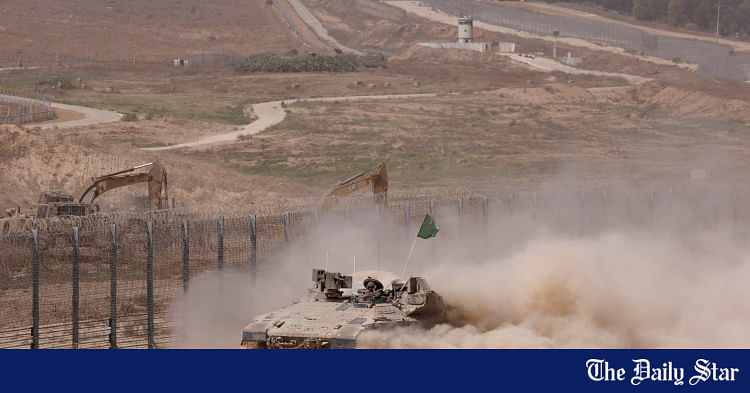Saif
Senior Member
- Joined
- Jan 24, 2024
- Messages
- 15,405
- Nation

- Axis Group

West has double standards regarding Palestine: PM

Prime Minister Sheikh Hasina yesterday censured Western countries for their double standards towards innocent Palestinian people.
"Western countries are showing double standard regarding the Palestinians," she said. The prime minister said this while handing over a cheque of Tk 5 crore in aid of the Palestinian people.
Palestine Ambassador Yousef SY Ramadan received the cheque on behalf of his country at PM's official residence Ganabhaban. PM's speech writer M Nazrul Islam briefed reporters after the call on.
Hasina said that Western countries always talk about human rights and education for all. "But they do not bother about the human rights violation of Palestinians, killing innocent people in there, they kept mum here," she said.
The prime minister appreciated the four NATO member countries who recently recognised Palestine as a state. She mentioned that people of Bangladesh have soft corner for the Palestinian people.
She said that people of Bangladesh could realise the pain and sufferings of the Palestinian people from their heart because in 1971 they had gone through same kind of situation.
"We had witnessed same kind of atrocities and killing of innocent people," she said. She recalled her own experience when she was in captivity in 1971 for nine months.
She also talked about her life in exile after the assassination of the Father of the Nation Bangabandhu Sheikh Mujibur Rahman. "So we could realise the pain and miseries of the Palestinian people," she said.
She mentioned that in every international forum across the globe she always expressed her concern for the Palestinian people. "In doing so I did not bother about anyone's red eyes," she said.
Ambassador Yousef Ramadan briefly described the miserable situation of his country due to the ongoing Israeli attacks. Ambassador-at-Large Mohammad Ziauddin and PM's Principal Secretary M Tofazzel Hossain Miah were among others present at the meeting.
Prime Minister Sheikh Hasina yesterday censured Western countries for their double standards towards innocent Palestinian people.
"Western countries are showing double standard regarding the Palestinians," she said. The prime minister said this while handing over a cheque of Tk 5 crore in aid of the Palestinian people.
Palestine Ambassador Yousef SY Ramadan received the cheque on behalf of his country at PM's official residence Ganabhaban. PM's speech writer M Nazrul Islam briefed reporters after the call on.
Hasina said that Western countries always talk about human rights and education for all. "But they do not bother about the human rights violation of Palestinians, killing innocent people in there, they kept mum here," she said.
The prime minister appreciated the four NATO member countries who recently recognised Palestine as a state. She mentioned that people of Bangladesh have soft corner for the Palestinian people.
She said that people of Bangladesh could realise the pain and sufferings of the Palestinian people from their heart because in 1971 they had gone through same kind of situation.
"We had witnessed same kind of atrocities and killing of innocent people," she said. She recalled her own experience when she was in captivity in 1971 for nine months.
She also talked about her life in exile after the assassination of the Father of the Nation Bangabandhu Sheikh Mujibur Rahman. "So we could realise the pain and miseries of the Palestinian people," she said.
She mentioned that in every international forum across the globe she always expressed her concern for the Palestinian people. "In doing so I did not bother about anyone's red eyes," she said.
Ambassador Yousef Ramadan briefly described the miserable situation of his country due to the ongoing Israeli attacks. Ambassador-at-Large Mohammad Ziauddin and PM's Principal Secretary M Tofazzel Hossain Miah were among others present at the meeting.








































